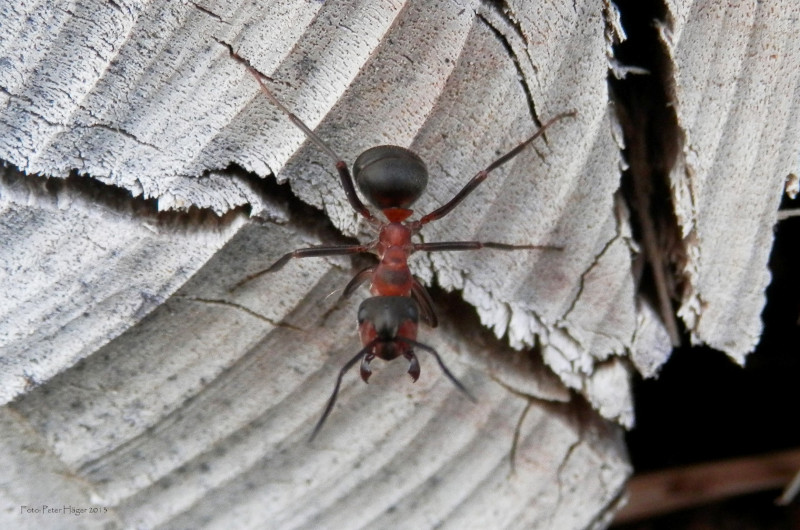
Red Wood Ant Facts
- This impressive Arthropod most frequently goes by the uniquely descriptive common name of the Red Wood Ant for obvious reasons. It does have a few other general titles it’s known by, though. These include the terms southern wood ant, and, for some bizarre reason, horse ant.
- Among scientific professionals, however, it’ typically holds another moniker’s more likely known by another title. That’s it technical appellation. Thankfully, that’s an extremely simple term for the layperson to pronounce. That’s because it holds the formal tag of Formica rufa.
- The amazing invertebrate received this short honorific due to the efforts of the great Carl Linnaeus. That esteemed Swedish zoologist accomplished the first recorded acknowledgement of it as a separate and distinct species. He managed that noteworthy feat in 1761.
- This variety of ant stand out from many others due to a combination of several factors. It constructs massive colonies, often housing over 400,000 individuals, as well as multiple queens. The marvel also forms supercolonies, connecting multiple nests across large areas.
- Unfortunately, the intriguing Red Wood Ant appears to possess a rapidly diminishing population base. That lamentable situation further seems to hold true throughout the entirety of its native range. The IUCN therefore presently lists it as Near Threatened on its Red List.
- It currently faces multiple threats to its continued existence as a species. Like many creatures, most of these stem from human activities. Habitat loss remains its most immediate danger. Nevertheless, the insect also now faces the severe threat on ongoing climate change.
Related Articles
Red Wood Ant Physical Description
The remarkable Red Wood Ant represents a highly intriguing species that quickly beguiles most individuals fortunate enough to encounter it. Visually, though, the creature maintains the same approximate physical pattern displayed by its innumerable relatives found throughout the world.
Like those seemingly innumerable kindred, this particular ant displays a specific variation of the physiological characteristic known as sexual dimorphism. The members of the classes of the invertebrate present differing physical sizes. Each also tends to present slightly varying colors, too.
As remains common, the Queen always attains the greatest body length of any members of the species. This individual achieves an average measurement equaling roughly 0.28 – 0.35 in (7 – 9 mm). She further usually displays a darker shade of brown, with her underside being lighter.
The males grow to a much smaller size than their royal counterpart. These develop body lengths equaling an average of only 0.12 – 0.16 in (3 – 4 mm). In coloring, each typically shows a much darker aspect than the queen. This pattern mainly consists of a black and dark brown.
The significantly more numerous worker caste of the distinctive Red Wood Ant manifests yet another color scheme. This evolutionary trait almost always includes a much brighter combination of shades. These usually range from various hues of bright yellow to a brownish-yellow.
Between them, however, the three distinctly different castes also evolved widely varying characteristics in other, minor ways. Workers have far fewer hairs on their heads than the others. Queens have relatively narrower heads than the others. Males, though, generally combine these.
- Kingdom: Animalia
- Phylum: Arthropda
- Class: Insecta
- Order: Hymenoptera
- Family: Formicidae
- Genus: Formica
- Species: F. rufa
Red Wood Ant Distribution, Habitat, and Ecology
The remarkable Red Wood Ant evolved as native to an extremely broad swathe of the surface of the globe. The full extent of that natural zone of habitation might surprise some people, though. That’s because it developed as indigenous to much of both the continents of Europe and Asia.
Confirmed reports place the wonder naturally as far north in Europe as parts of Scandinavia. From there, however, its range reaches further outward, through Iberia, Anatolia, and Great Britain. Not stopping there, it also lives as far away as Lake Baikal, situated in remote southern Siberia.
The widespread marvel of Nature also possesses an extremely impressive versatility regarding its choice of habitat. As a result, it resides in a wide range of ecosystems. Nevertheless, the intrepid creation of evolution does display a moderate preference for several types of environment.
Many populations appear in such areas as regions of open heath and grasslands. Others, however, choose to build their homes in areas consisting of either scrub or open glades. Many even construct their colonies in coniferous plantations, unperturbed by the proximity to human presence.
Despite its relatively tiny stature, the Red Wood Ant continues to be considered a keystone species across its full native range. Their nest consist of large, dome-shaped structures on the ground. Each colony generally persists for many years, with their feeding controlling numerous forest pests.
Each ant primarily consumes honeydew, produced by extraordinarily tiny aphids. Yet they also augment this food source with quantities of various local invertebrates. These include arachnids and insects. In this manner, the Arthropod directly affects the food chain in its specific habitat.
Species Sharing Its Range
Check out our other articles on 4 Supremely Stunning Squirrels, Knysna Seahorse, Okenfenokee Swamp, Striped Skunk, Southern Darwin’s Frog, Executioner Wasp, Mangrove Monitor, Great Potoo
